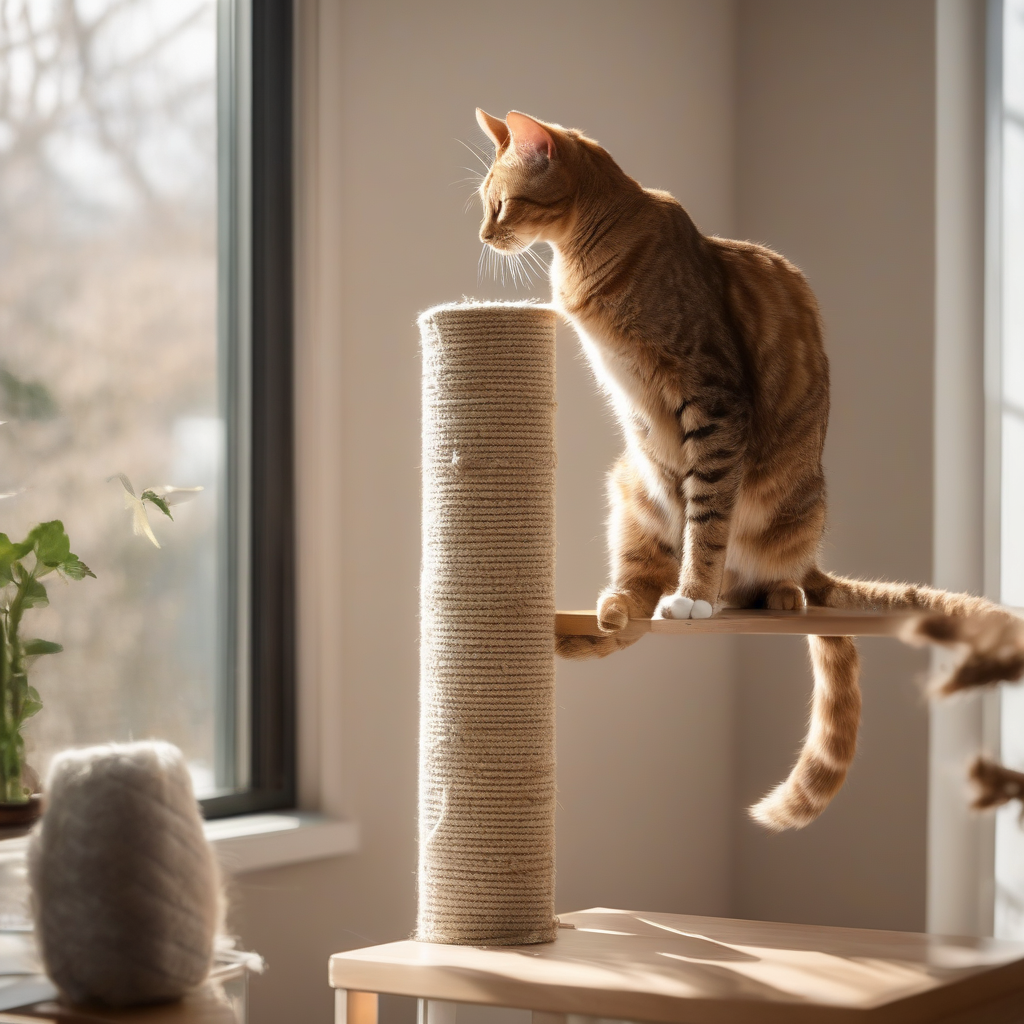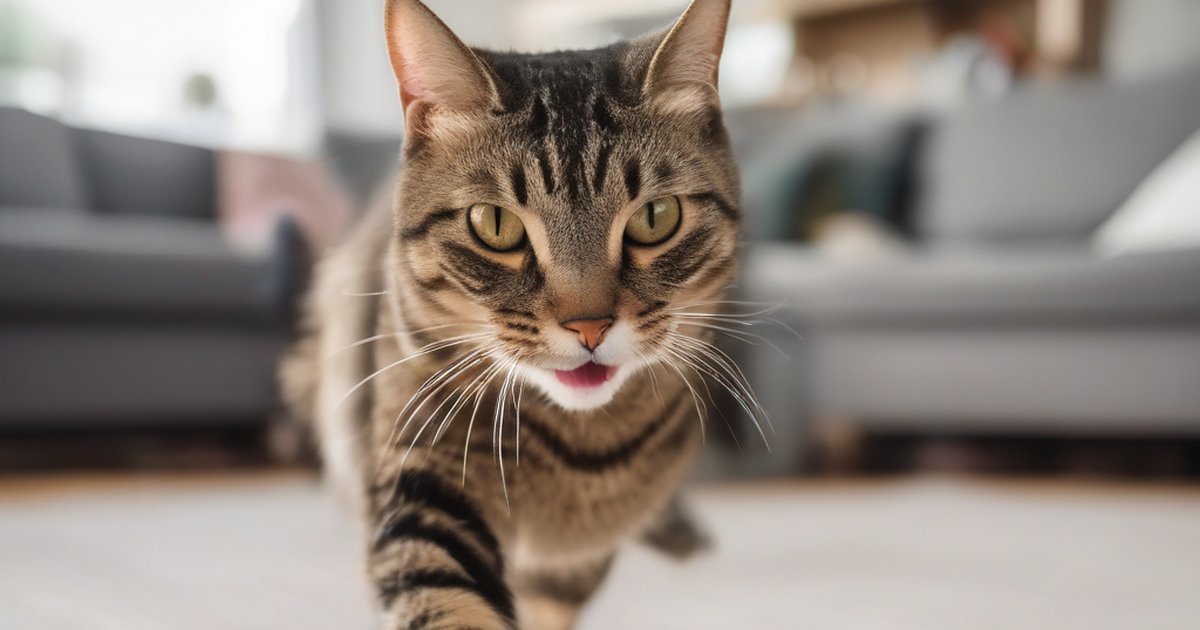Introduction
Cat scratching is a natural and essential behavior, but when it targets furniture, carpets, or other household items, it becomes one of the most frustrating challenges for cat owners. Despite being a normal feline behavior that serves important physical and emotional needs, unwanted scratching can strain the human-cat relationship and even lead to pet relinquishment. A comprehensive new study involving nearly 2,500 cat owners provides clear evidence about which management strategies actually work—and which ones don’t.
The research reveals that environmental enrichment and positive reinforcement approaches are dramatically more effective than punishment-based methods for addressing scratching issues, offering cat owners a science-backed roadmap to harmonious coexistence with their feline companions.
Research Background
While scratching serves multiple purposes for cats—including claw maintenance, territory marking, and stress relief—previous research on managing unwanted scratching behavior has been limited in scope and often anecdotal. Most existing studies focused on small sample sizes or specific populations, making it difficult to develop comprehensive management guidelines.
This study filled a crucial gap by examining real-world scratching management across a diverse population of cats and owners. The researchers sought to understand not only which strategies work best, but also how cat characteristics and owner approaches influence the success of different interventions.
Study Details
Study Design: Cross-sectional online survey conducted across multiple countries
Participants: 2,465 cat owners from diverse backgrounds and geographic locations
Methods: Participants completed detailed questionnaires about:
- Their cats’ scratching behaviors and problem areas
- Management strategies they had tried
- Cat characteristics (age, breed, housing type, health status)
- Owner characteristics and attitudes toward different approaches
- Success rates of various intervention methods
The survey included both quantitative measures of scratching frequency and qualitative assessments of problem severity and management effectiveness.
Key Findings
The results clearly demonstrated the superiority of positive, enrichment-based approaches over punishment methods:
Primary Results
- 78% reduction in scratching problems when using environmental enrichment strategies
- 3.2 times more effective outcomes with positive reinforcement compared to punishment
- 65% of owners using punishment-based approaches reported continued or worsened scratching problems
- 89% of owners using enrichment strategies reported significant improvement or complete resolution
Secondary Findings
- Age matters: Younger cats (under 2 years) showed greater responsiveness to all intervention types
- Housing influence: Indoor-only cats had higher rates of furniture scratching but also greater improvement with enrichment
- Breed differences: Certain breeds, particularly Siamese and Oriental types, showed more persistent scratching behaviors
- Multiple cat households: Scratching issues were more complex but still responded well to enrichment approaches
Implications for Pet Owners
This research provides clear, actionable guidance for managing cat scratching behavior effectively:
What This Means for You
The study demonstrates that working with your cat’s natural behaviors, rather than against them, produces the best outcomes. Environmental enrichment doesn’t suppress scratching—it redirects it to appropriate outlets while meeting your cat’s behavioral needs.
Most effective strategies identified:
- Providing multiple scratching posts with different textures and orientations
- Placing scratching surfaces near sleeping areas and entry points
- Using positive reinforcement when cats use appropriate scratching surfaces
- Offering interactive play sessions to reduce stress and boredom
Least effective approaches:
- Punishment-based methods (spray bottles, loud noises, physical corrections)
- Simply removing scratching opportunities without providing alternatives
- Declawing or other surgical interventions
When to Consult Your Veterinarian
While environmental management is highly effective, professional guidance is important when:
- Scratching behavior suddenly increases or changes significantly
- Your cat shows signs of stress, anxiety, or other behavioral changes
- Multiple management strategies have been tried without success
- You’re considering more intensive interventions
Study Limitations
This research, while comprehensive, had some constraints to consider:
- Self-reporting bias: Success rates depend on owner perceptions and reporting accuracy
- Variable implementation: Success depends on consistent and proper application of strategies
- Individual variation: Some cats may need specialized approaches not captured in the survey
- Long-term outcomes: The study didn’t track effectiveness over extended periods
Bottom Line
This landmark study provides compelling evidence that environmental enrichment and positive reinforcement are far superior to punishment-based approaches for managing cat scratching behavior. The 78% success rate with enrichment strategies offers hope for the millions of cat owners struggling with furniture damage and relationship stress.
The key takeaway: instead of fighting your cat’s natural scratching instincts, work with them by providing appropriate outlets and using positive reinforcement. This approach not only solves the immediate problem but strengthens the human-cat bond and supports your cat’s overall well-being.
For cat owners dealing with scratching issues, the path forward is clear: focus on environmental enrichment, provide appropriate scratching opportunities, and use positive reinforcement to guide your cat toward acceptable scratching surfaces. This evidence-based approach offers the best chance of success while maintaining a positive relationship with your feline companion.
Recommended Products
Based on the study’s findings about environmental enrichment effectiveness, here are scientifically-backed products that support healthy scratching behavior:
SmartCat Ultimate Scratching Post
Bergan Turbo Scratcher Cat Toy
PetSafe SsssCat Spray Pet Deterrent
These products directly support the study’s key finding: environmental enrichment is 78% more effective than punishment-based approaches for managing cat scratching behavior.
Affiliate Disclosure: This article contains affiliate links. We may earn a commission from purchases made through these links at no additional cost to you. Product recommendations are based on scientific research and quality standards, not affiliate relationships. Our editorial independence ensures recommendations align with the study’s findings about effective cat behavior management.
This article summarizes peer-reviewed research for educational purposes. Always consult with your veterinarian for personalized advice about your pet’s health and behavior.


